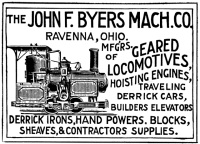J. Tranter
Well-Known Member
- Joined
- Jul 8, 2007
- Messages
- 126
- Reaction score
- 0
Never mind I read your post better ;D






![DreamPlan Home Design and Landscaping Software Free for Windows [PC Download]](https://m.media-amazon.com/images/I/51kvZH2dVLL._SL500_.jpg)









Thanks. It's a little big for Lego-scale. I suspect it'll be a little warm in for him in the cab under steam too. I'm not sure about the gas tank yet. There's not a lot of room left anywhere, but it won't run long on one fill of water. Some ideas I've had include the front footplates and under the cab roof as well as the usual spots.Macca said:It's looking great Shred. I like the shot with the lego man, it gives a sense of scale.
Do you plan to use the cylindrical gas tank from the plans or a hidden rectangular one like tony bird did?
Are you modeling your body work after a particular engine, or is it your design? I think the roof gives it a cleaner look than having the top open.



Yeah, that would be cool. The more the merrier.Paolo said:If you like I'll send you a drawing of one I have used on a my past project and I'm using for the next..
Cheers
Paolo